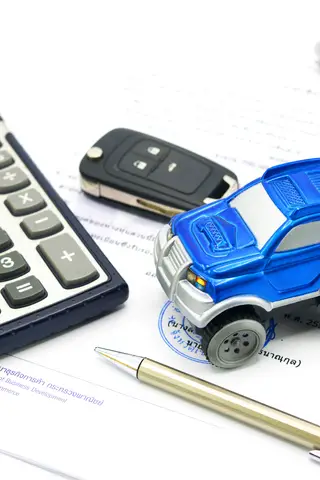If you’re in the market for a new truck for your business this year, tax rules may impact your buying decision. This is because of the convoluted depreciation rules for these vehicles. Size matters!
There are dollar limits that apply for light trucks and vans placed in service in 2016. A light truck is one that weighs no more than 6,000 pounds (unloaded gross vehicle weight). The maximum depreciation allowance in 2016 is $11,560 if the truck is new, or $3,560 if the truck is preowned (assuming the truck is used 100% for business).
Note: You don’t take any depreciation deduction if you opt to write off the cost of business driving using the IRS mileage rate (54¢ per mile in 2016).
Bigger
If you buy a heavy SUV as your truck or a pick-up weighing more than 6,000 pounds but not more than 14,000 pounds, you can use first-year expensing up to $25,000 off the top. Then you can use 50% bonus depreciation for the balance of the cost of the truck, and regular depreciation for any remaining amount.
For example, say you buy a 2016 Chevrolet Tahoe at a cost of $60,000 ($47,000 base price plus additions, taxes, and fees), and use it 100% for business. Assuming you’re profitable, you can expense $25,000, take bonus depreciation of $17,500 (50% of [$60,000 – $25,000]), and regular depreciation of $3,500 (20% of [$60,000 – ($25,000 + $17,500)]). Thus, of the $60,000 cost, $46,000 can be deducted in the first year. The balance of the cost can be depreciated over the remaining 5 years (32% of the cost not previously deducted in year 2, 19.20% in year 3, 11.52% in years 4 and 5, and 5.76% in year 6).
Biggest
The biggest trucks mean the biggest write offs. If you buy a “big truck”, the truck is treated as “equipment” for purposes of the Section 179 deduction and is not subject to any of the limitations for smaller trucks. A big truck is one that weighs more than 6,000 pounds and has any of the following:
- Designed to seat more than 9 passengers behind the driver’s seat;
- Equipped with a cargo area (either open or enclosed by a cap) of at least 6 feet in interior length that is not readily accessible from the passenger compartment;
- That has an integral enclosure fully enclosing the driver compartment and load carrying device, does not have seating rearward of the driver’s seat, and has no body section protruding more than 30 inches ahead of the leading edge of the windshield.
Assuming you’re profitable, the entire cost can be deducted this year up to the Section 179 dollar limit in 2016 of $500,000 (this limit does not begin to be phased out until your total annual equipment purposes exceed $2,010,000); the $25,000 expensing limit does not apply here.
Trade-ins
If you’re trading in your old truck for a new one, things become more complicated from a tax point of view. You have a choice:
- Elect to treat the trade-in as a tax-free disposition of the old truck and the purchase of the new one. In this case, the depreciable basis of the new truck becomes the adjusted basis of the old one. If you’ve fully depreciated the cost of the old truck, you have no basis in the new one to depreciate.
- If you don’t make this election, you have to figure depreciation separately for the remaining basis of the old truck and any additional amount you paid for the new one. In this case, there are two depreciation limits: one that applies to the remaining basis of the old truck, which is the amount you would have claimed had there been no trade-in, and one that applies to the additional amount paid for the new truck reduced by the depreciation allowance for the remaining basis of the old truck.
Bottom line: Work with your CPA or other tax advisor if you’re thinking of buying a new truck. Your advisor can help you understand the after-tax cost of your decision.



